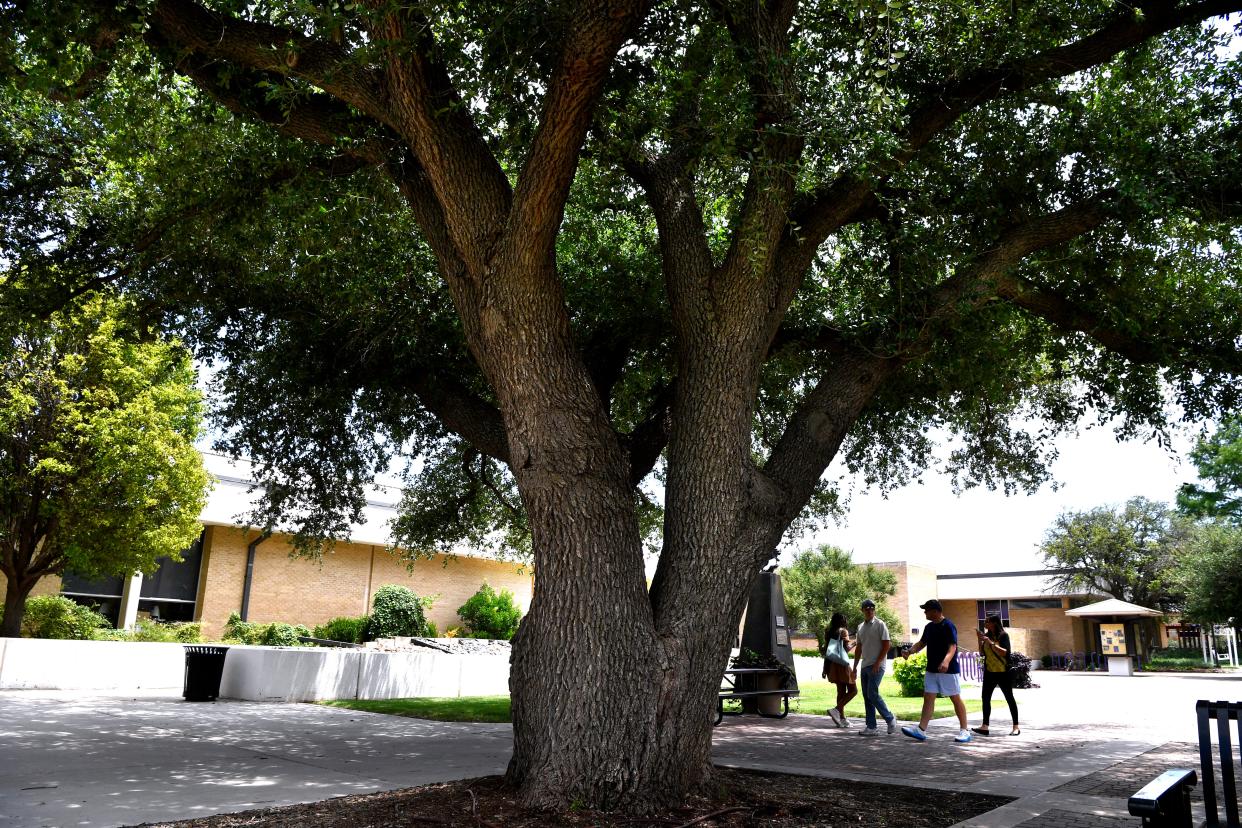Trees have cool made in the shade

Well, since it's been a little warm lately — and I have to say I sure feel sorry for roofers having to work when temperatures on a roof must approach something like the heat found on the surface of the sun — I thought I would write a bit about heat and trees.
Actually, while the above may sound like I want to talk about the effects of heat on trees, I want to go a different direction.
First, I have to pose a question. Even though, from time to time, it can be really hot around here, with plenty of heat to go around, do you know how to make more of it? Heat, that is.
I do. To exacerbate an already hot enough situation, Step One is to start removing plants, especially trees. The goal here if you want more heat, is to give the ground and any nearby structures, asphalt, or concrete, as much exposure to sunshine as possible.
The next thing, and this is important to make things as hot as you can get them, is to replace any turf, organic mulch, or even bare ground with rocks or masonry products. I'm personally not a great fan of xeriscaping as a landscape method, and besides with most xeriscapes having few, if any, trees, I find the area they are in and the area around them to be really hot.
Xeriscapes can have an interesting look, and done correctly, they can be pretty low maintenance. And, just to be fair, some pretty interesting plants can be used in the xeriscaping process, but they are going to have to be small, low maintenance plants that can take a lot of heat. Personally, I like to view that kind of thing from a distance (usually the distance from where I'm looking at being the nearest shade tree).
Now, the second question is: do you know how to get less heat, or at least make the ambient temperature more comfortable? Well, the easiest way to get there is to plant trees. Lots of big, thick, woody-stemmed shade trees with lush, dense, canopies that block a lot of light.
By the way, do you know what else trees do that helps cool things down? They transpire, which means that they put moisture in the air. While this process is not on the level of some of the outside misters you find around businesses that have put them outside, it's the same effect, and while not visibly noticeable, it does make things cooler. It's not just the shade of a tree that makes it more pleasant under that tree than outside it in the harsh summer sun.
While as a tree guy I hate to admit this, something else that helps cool the area around a house, or any other structure, is turf. Yup, the green grass, or sod as it's sometimes referred to, can absorb without reflecting a lot of heat.
And since grass is going to transpire also, there's some of that cooling effect, even though grass is a primitive, unevolved plant that can't help with making shade. The reason I mention this is that these days there is a big push to limit, or entirely get rid of turf so that water usage can be lower, so it goes with a tree-less xeriscape type landscape.
I get the being-conservative-with-water thing, and if it comes down to either no water for other uses, or keeping a landscape, then of course the landscape has to go. However, we aren't there, and that choice can be avoided with good landscaping practices.
The problem with going towards a more xeriscaped look for a community is that then the community becomes a "heat island" which is another, pretty serious problem of its own (just ask the city planners in Dallas how they like it).
Don't feel guilty about preferring grass and trees over rocks and heat. The outside of your house can be a living area just as much as the inside, and ordering it to be as comfortable and pleasant as possible is just good sense.
This article originally appeared on Abilene Reporter-News: Trees have cool made in the shade

